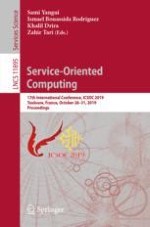2019 | Book
Service-Oriented Computing
17th International Conference, ICSOC 2019, Toulouse, France, October 28–31, 2019, Proceedings
Editors: Sami Yangui, Ismael Bouassida Rodriguez, Dr. Khalil Drira, Zahir Tari
Publisher: Springer International Publishing
Book Series : Lecture Notes in Computer Science
